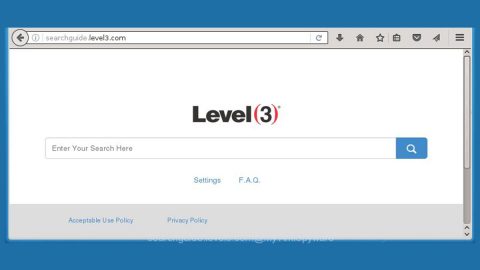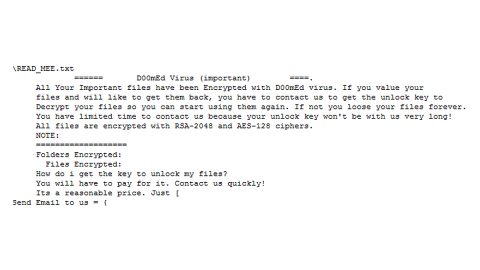What is PGPSnippet ransomware? And how does it implement its attack?
PGPSnippet ransomware is a newly discovered cyber infection that aims to lock important data in an infected PC. This crypto-malware uses a strong encryption algorithm for encrypting files and appends the “[email protected]” extension in marking the files it encrypts.
PGPSnippet ransomware is a typical ransomware infection that downloads and creates additional malicious files in the system the instant it manages to infiltrate it. It also makes alterations in the registry to ensure that it can run regularly on every Windows boot up. The encryption process begins after PGPSnippet ransomware finds the files with the following formats:
.txt, .doc, .docx, .xls, .index, .pdf, .zip, .rar, .css, .lnk, .xlsx, .ppt, .pptx, .odt, .jpg, .bmp, .png, .csv, .sql, .mdb, .sln, .php, .asp, .aspx, .html, .xml, .psd, .bk, .bat, .mp3, .mp4, .wav, .wma, .avi, .divx, .mkv, .mpeg, .wmv, .mov, .ogg, .java, .csv, .kdc, .dxg, .xlsm, .pps, .cpp, .odt, .php, .odc, .log, .exe, .cr2, .mpeg, .jpeg, .xqx, .dotx, .pps, .class, .jar, .psd, .pot, .cmd, .rtf, .csv, .php, .docm, .xlsm, .js, .wsf, .vbs, .ini, .jpeg, .gif, .7z, .dotx, .kdc, .odm, .xll, .xlt, .ps, .mpeg, .pem, .msg, .xls, .wav, .odp, .nef, .pmd, .r3d, .dll, .reg, .hwp, .7z, .p12, .pfx, .cs, .ico, .torrent, .c
The encrypted files can be easily identified as they are marked with the “[email protected]” file extension. You can also see a file named “README_DECRYPT!!!.txt” file that appears to be the ransom note of PGPSnippet ransomware – it has the following content:
“ATTENTION!
All your documents and other files ENCRYPTED !!!
TO RESTORE YOUR FILES YOU MUST PAY: $500 by Bitcoin to this address:
You can open a wallet here
https://electrum.org/#download
https://blockchain.info
https://localbitcoins.com
https://paxful.com/en
https://www.bestchange.com
Send the file on the way “Win + R >> %APPDATA%” file name hosts.txt to our e-mail after payment this email address:[email protected]
We will confirm payment and send to you decrypt key + instruction
Remember: you have 72 hours and if you not paid, that price will up
ATTENTION: all your attempts to decrypt your PC without our software and key can lead to irreversible destruction of your files!”
As you can see, creators of PGPSnippet ransomware demands a ransom worth $500 in Bitcoins that you must pay to the given Bitcoin wallet address. Nevertheless, paying the ransom should be out of your options as it won’t really help you in recovering your files. The first thing you have to do before trying out recovery options is to kill PGPSnippet ransomware from your system first before it can do more damage to your other unaffected files.
How does PGPSnippet ransomware proliferate?
PGPSnippet ransomware proliferates in spam emails containing a corrupted attachment. Note that these kinds of malware-laden emails might look legitimate as crooks tend to disguise them to make it seem like they were sent by a well-known individual or company to lure you into opening the email and downloading the attachment. Despite its efforts in making itself look legitimate, it still isn’t hard to spot bogus emails as they are often full of grammatical and spelling errors so if you see these kinds of emails, delete them right away.
Kill PGPSnippet ransomware by using the given removal guide below.
Step 1: Launch the Task Manager by simply tapping Ctrl + Shift + Esc keys on your keyboard.
Step 2: Under the Task Manager, go to the Processes tab and look for any suspicious-looking process which takes up most of your CPU’s resources and is most likely related to PGPSnippet ransomware.

Step 3: After that, close the Task Manager.
Step 4: Tap Win + R, type in appwiz.cpl and click OK or tap Enter to open Control Panel’s list of installed programs.
Step 5: Under the list of installed programs, look for PGPSnippet ransomware or anything similar and then uninstall it.

Step 6: Next, close Control Panel and tap Win + E keys to launch File Explorer.
Step 7: Navigate to the following locations below and look for PGPSnippet ransomware’s malicious components such as “[random name].exe” and “README_DECRYPT!!!.txt” and other suspicious files, then delete all of them.
- %TEMP%
- %WINDIR%\System32\Tasks
- %APPDATA%\Microsoft\Windows\Templates\
- %USERPROFILE%\Downloads
- %USERPROFILE%\Desktop
Step 8: Close the File Explorer.
Before you proceed to the next steps below, make sure that you are tech savvy enough to the point where you know exactly how to use and navigate your computer’s Registry. Keep in mind that any changes you make will highly impact your computer. To save you the trouble and time, you can just use [product-name], this system tool is proven to be safe and excellent enough that hackers won’t be able to hack into it. But if you can manage Windows Registry well, then, by all means, go on to the next steps.
Step 9: Tap Win + R to open Run and then type in regedit in the field and tap enter to pull up Windows Registry.

Step 10: Navigate to the following path:
- HKEY_CURRENT_USER\Control Panel\Desktop\
- HKEY_USERS\.DEFAULT\Control Panel\Desktop\
- HKEY_LOCAL_MACHINE\Software\Microsoft\Windows\CurrentVersion\Run
- HKEY_CURRENT_USER\Software\Microsoft\Windows\CurrentVersion\Run
- HKEY_LOCAL_MACHINE\Software\Microsoft\Windows\CurrentVersion\RunOnce
- HKEY_CURRENT_USER\Software\Microsoft\Windows\CurrentVersion\RunOnce
Step 11: Delete the registry keys and sub-keys created by PGPSnippet ransomware.
Step 12: Close the Registry Editor and empty the Recycle Bin.
Try to recover your encrypted files using the Volume Shadow copies
Restoring your encrypted files using Windows’ Previous Versions feature will only be effective if PGPSnippet ransomware hasn’t deleted the shadow copies of your files. But still, this is one of the best and free methods there is, so it’s definitely worth a shot.
To restore the encrypted file, right-click on it and select Properties, a new window will pop-up, then proceed to Previous Versions. It will load the file’s previous version before it was modified. After it loads, select any of the previous versions displayed on the list like the one in the illustration below. And then click the Restore button.

Complete the removal process of PGPSnippet ransomware by using a trusted and reliable program like [product-name]. Refer to the following guidelines on how to use it.
Perform a full system scan using [product-code]. To do so, follow these steps:
- Turn on your computer. If it’s already on, you have to reboot
- After that, the BIOS screen will be displayed, but if Windows pops up instead, reboot your computer and try again. Once you’re on the BIOS screen, repeat pressing F8, by doing so the Advanced Option shows up.
- To navigate the Advanced Option use the arrow keys and select Safe Mode with Networking then hit
- Windows will now load the SafeMode with Networking.
- Press and hold both R key and Windows key.
- If done correctly, the Windows Run Box will show up.
- Type in the URL address, [product-url] in the Run dialog box and then tap Enter or click OK.
- After that, it will download the program. Wait for the download to finish and then open the launcher to install the program.
- Once the installation process is completed, run [product-code] to perform a full system scan.
















